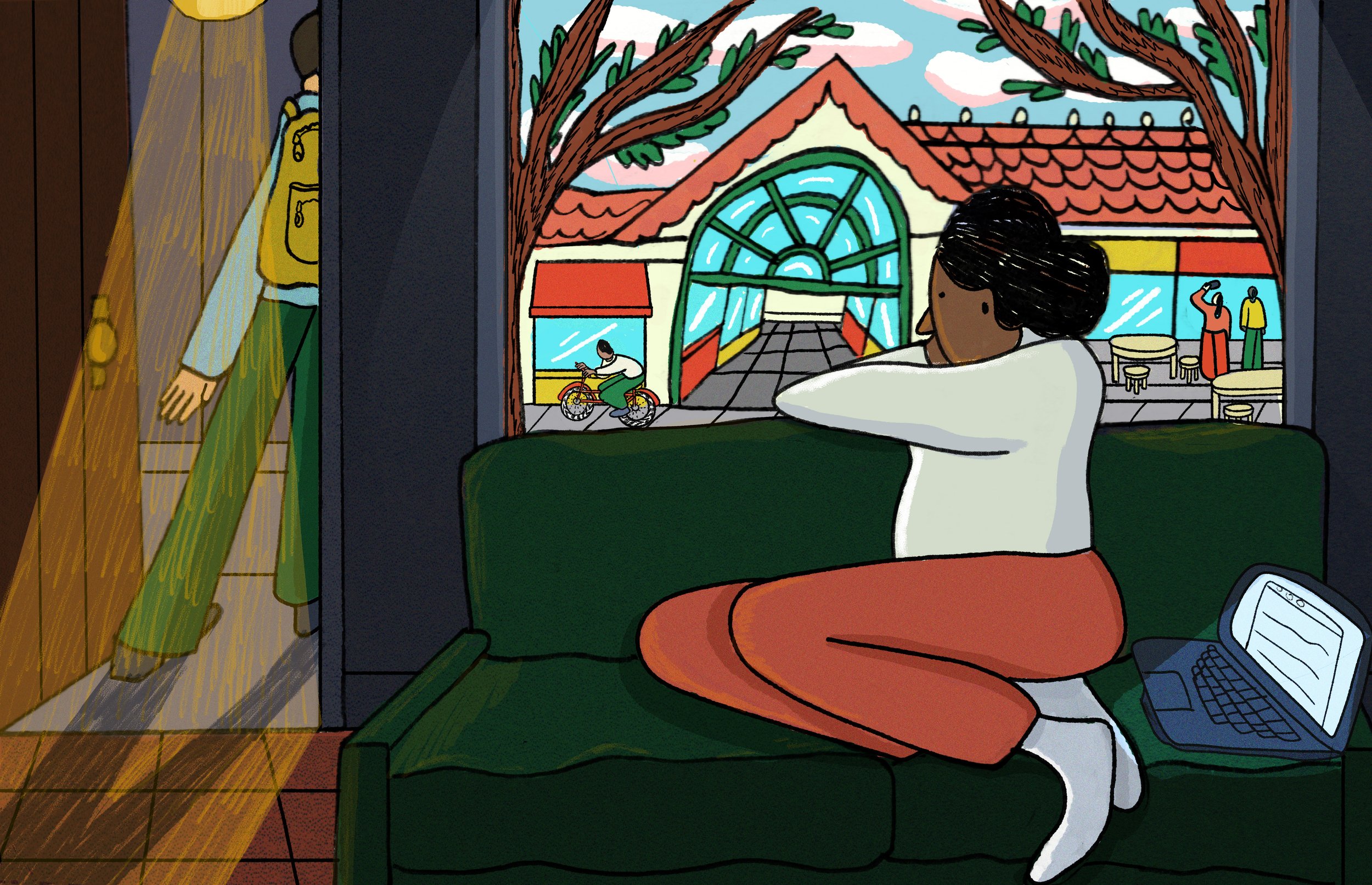1 a.m. in Los Angeles

1 a.m. in Los Angeles is the Santa Ana winds whipping hot and violent through the rain-starved city. Katabatic, they gust rapidly downslope from the mountains through the valleys, bringing with them the threat of fire. The name comes from the Ancient Greek word katábasis, meaning a journey into the underworld, the realm of the dead. On this night, the Santa Anas have ignited two out-of-control wildfires, squalls of embers bookending LA.
The sliding doors to my house rattle as I stand at the glass, staring at the fury unfolding in my backyard. The Santa Anas scream through the dry darkness, an invisible hand hurling browned fronds from the tops of towering palm trees to the earth below. Soil-filled ceramic planters are thrown on their sides, leaving chunks of terra cotta and fuchsia bougainvillea trembling on the ground. My toddler’s flimsy wooden playhouse picks up and slams onto the other side of the lawn like Dorothy’s farmhouse.
While one daughter sleeps in my bed, the other joins my side, slipping her hand into mine. At 13, she is already taller than me, every day inching further away.
Flakes of ash from the nearby Eaton Canyon fire swirl in the sky, Southern California’s version of January snow. The thick and pungent char permeates our closed doors and windows. The wind brays against the walls, a rabid animal trying to break into my house. I think about how, fifty years ago, Joan Didion wrote of the Santa Anas: “The winds show us how close to the edge we are.”
“Are we going to have to evacuate?” my daughter asks, a slight quiver in her voice.
I don’t want to fill her with false reassurance, but I don’t want her to go to sleep afraid.
“I hope not,” I answer.
The once lush and verdant hills that surround us have turned brittle and lifeless in the 8-month absence of water. We are surrounded by kindling.
Instead of gathering valuables and important documents, the two of us stand there, hands gripped. This season’s Santa Anas are unlike any I’ve witnessed. It feels like the wind is commanding our attention, demanding that we look. I try to steady my breath, to not transfer my fear to my daughter. I’m scared about the earth she and her sister are inheriting, the extreme weather that occurs with alarming frequency. I’m scared about how powerless I feel. In the presence of Mother Nature’s fury, my own motherhood feels diminished. She is howling. She is angry. She is reminding me of everything I want to, but cannot, protect my daughters from.
Suddenly, my daughter turns towards me. “Can I go outside, Mama? I want to know what it feels like.”
I shake my head. “Absolutely not. It’s way too dangerous.”
“Only for a second. Please?”
She opens the sliding doors and steps barefoot onto the patio. The wind rips through her long hair, flinging it wildly around. The fabric of her lace-trimmed, pale mint nightgown flaps like wings. She turns towards me, exhilarated, her hazel eyes wide and gleaming, her mouth agape in awe. She lifts her arms as though to allow the wind to carry her away.
I yank her back inside, away from the precipice, close to me once more—for now.
About the Author
Kimberly Bridson is a Los Angeles-based Mexican-American writer. Her work has been featured in the New York Times, LA Times, Vogue, Slate, and other publications. Find her on Instagram @kimberlybridson.
Illustration by Jane Demarest.
Edited by Tusshara Nalakumar Srilatha.










